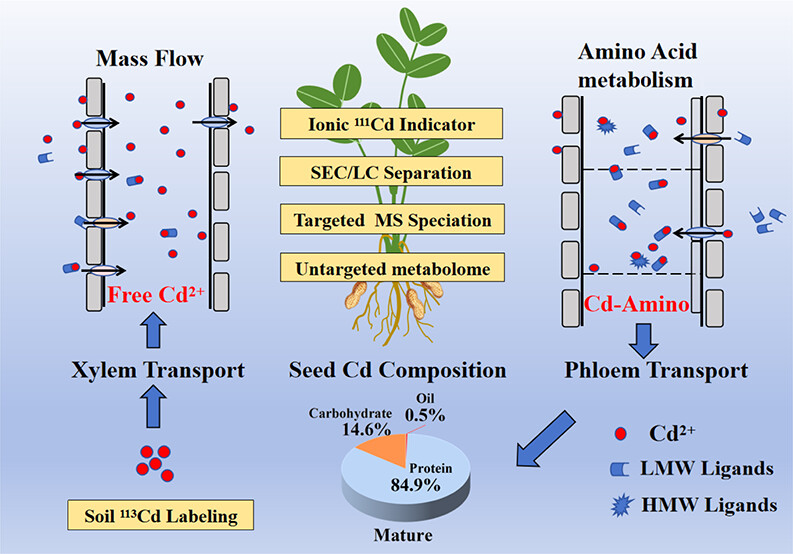
Cadmium (Cd) speciation dynamics during vascular transport in peanut plants remain poorly defined. This study combined 113Cd isotope tracing with multiple separation techniques and targeted mass spectrometry to characterize Cd speciation across four developmental stages. Cd was primarily sequestered by proteins and pectates, limiting its vascular mobility. In the xylem, Cd2+and low-molecular-weight complexes were detected, with cysteine (Cys)-Cd dominating in the seedling (40.8%) and maturity (26.3%) stages. Cd2+increased to 43.9–47.8% during flowering and podding, while Cys-Cd declined below 10%. Phloem sap contained 83.5–88.6% organic Cd, including high-molecular-weight complexes (1.8–17 kDa) comprising 14.5–25.2% of total Cd. These complexes were absent in the xylem. Metabolomics indicated that amino acids in the phloem preferentially bound Cd, promoting its accumulation in seed-storage proteins. These findings clarify the dynamic speciation and vascular distribution of Cd in peanuts and provide insight into the biochemical mechanisms underlying its accumulation in seeds.
This study published in Journal of Agricultural and Food Chemistry in July.

Attachment Download: